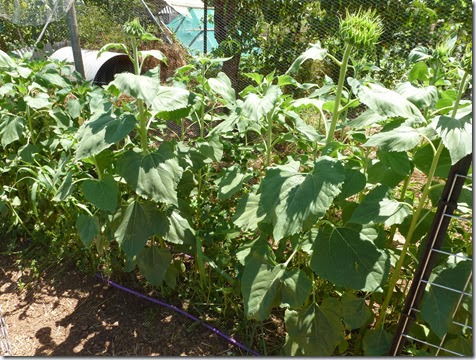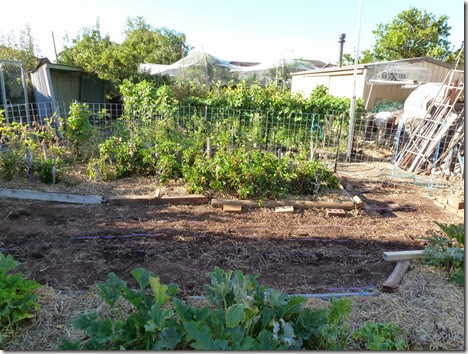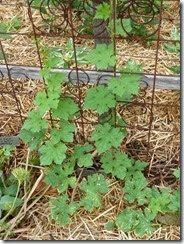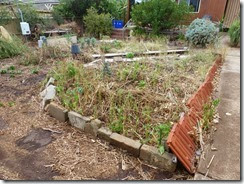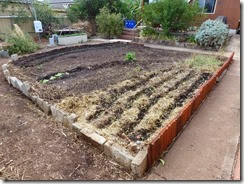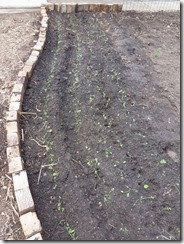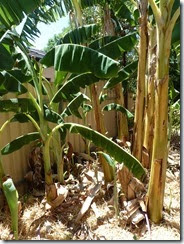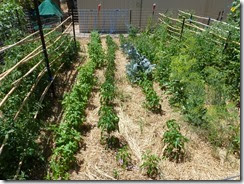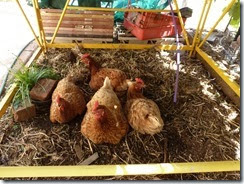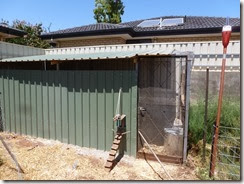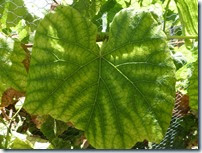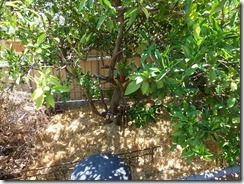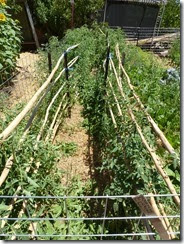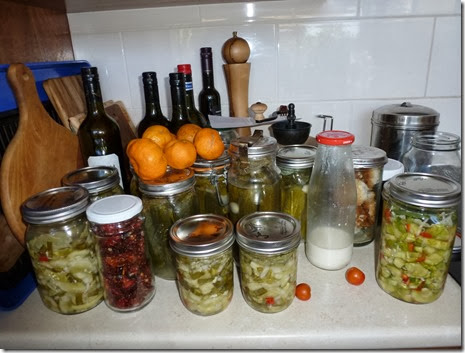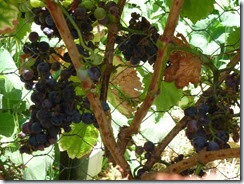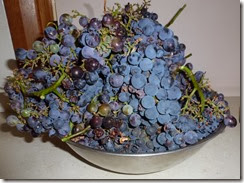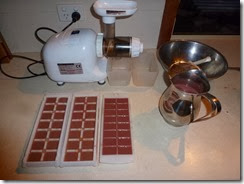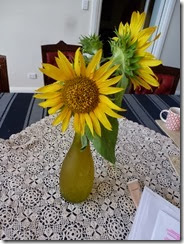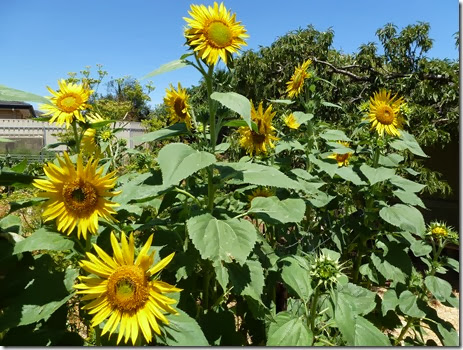Free-range chickens scratch and forage, eating a surprising amounts of green plant food in among the protein they find in the form of worms, earwigs and other insects.
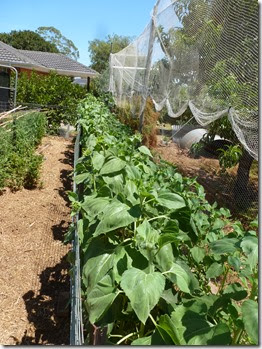 With the ‘break of the season’ rains during the final weeks of summer came the chance to get an early start on sowing winter ‘green manure’ crops; these will chase down any moisture that has escaped below the rooting zone of the vegetables, form mulch next Spring and add nitrogen to the soil from the air through the symbiotic relationships the legumes have with rhizobium soil bacteria that form nodules on their root systems.
With the ‘break of the season’ rains during the final weeks of summer came the chance to get an early start on sowing winter ‘green manure’ crops; these will chase down any moisture that has escaped below the rooting zone of the vegetables, form mulch next Spring and add nitrogen to the soil from the air through the symbiotic relationships the legumes have with rhizobium soil bacteria that form nodules on their root systems.
Well, that’s what most folk do – around here I plant a somewhat different mix of green manure plants called ‘clucker tucker’ – this mix serves chickens and soil equally.
I buy this ‘clucker tucker’ seed mix in bulk packs of 250g at a time from Green Harvest seeds in Queensland (Australia). Here’s what it says on the packet: -
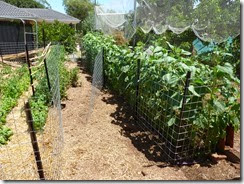 “Clucker Tucker™ is a hardy mix of all-important greens to keep your chooks healthy. Includes barrel medic, bok choy, buckwheat, forage chicory, clover, cocksfoot, linseed, lucerne, millet, forage plantain, silverbeet, sub-clover and sunflower. Most have vigorous root systems that will quickly regrow leaves that are cut or eaten. Clucker Tucker™ is a blend of annual and perennial plants, many of which will self-sow. In a forage area, seed can be broadcast; the chooks will need to be kept off the area for the plants to establish. After they have grazed it down, the chooks should be taken off to allow it to reshoot. Where space is limited, grow it in seedling trays and then place in the chook run or bird cage once grown. In a pasture, used as a 'herbal ley' it is a healthy addition for grazing animals. In temperate areas sow March - May or August - October. In subtropical areas sow August - September or May - July. In tropical areas sow April - August. Broadcast seed 2 - 3g/m2 in a forage area. In a seedling tray use 1 - 2g per seedling tray.”
“Clucker Tucker™ is a hardy mix of all-important greens to keep your chooks healthy. Includes barrel medic, bok choy, buckwheat, forage chicory, clover, cocksfoot, linseed, lucerne, millet, forage plantain, silverbeet, sub-clover and sunflower. Most have vigorous root systems that will quickly regrow leaves that are cut or eaten. Clucker Tucker™ is a blend of annual and perennial plants, many of which will self-sow. In a forage area, seed can be broadcast; the chooks will need to be kept off the area for the plants to establish. After they have grazed it down, the chooks should be taken off to allow it to reshoot. Where space is limited, grow it in seedling trays and then place in the chook run or bird cage once grown. In a pasture, used as a 'herbal ley' it is a healthy addition for grazing animals. In temperate areas sow March - May or August - October. In subtropical areas sow August - September or May - July. In tropical areas sow April - August. Broadcast seed 2 - 3g/m2 in a forage area. In a seedling tray use 1 - 2g per seedling tray.”
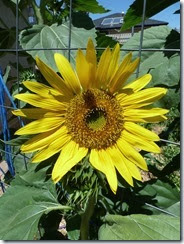 As the production beds are cleared of summer crops coming to the end of their productive life, the chooks (chickens) are turned in to clean up whatever insects they can find under the mulch. Two week later, the chickens are kicked out and the fenced beds shut off to them. Then the mulch is moved sideways around those plants - such as zucchinis and capsicums (‘peppers’) - still actively producing. The bare soil along the drip lines is now hoed and ‘clucker tucker’ seed mix just hand-strewn into the furrows, then covered and packed back down. A good soaking with rainwater through the drip lines and the job is done.
As the production beds are cleared of summer crops coming to the end of their productive life, the chooks (chickens) are turned in to clean up whatever insects they can find under the mulch. Two week later, the chickens are kicked out and the fenced beds shut off to them. Then the mulch is moved sideways around those plants - such as zucchinis and capsicums (‘peppers’) - still actively producing. The bare soil along the drip lines is now hoed and ‘clucker tucker’ seed mix just hand-strewn into the furrows, then covered and packed back down. A good soaking with rainwater through the drip lines and the job is done.

